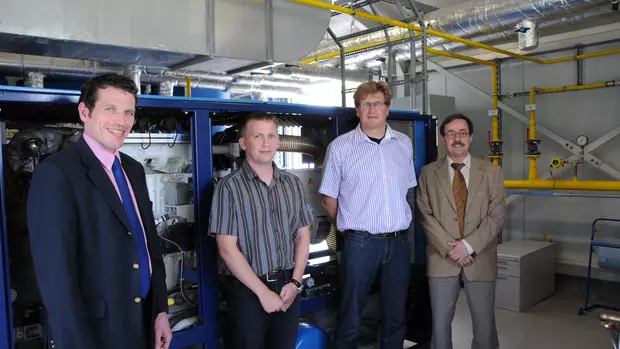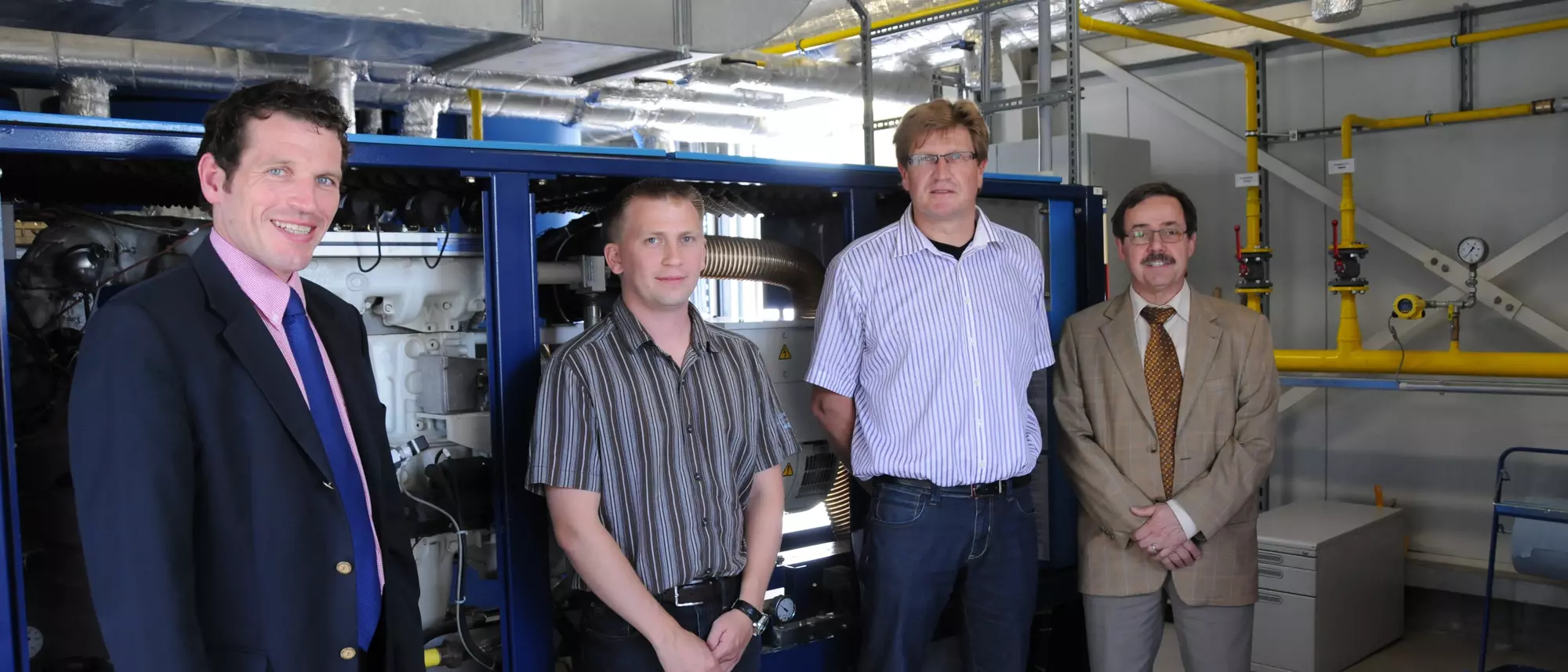
Energy efficiency and a cost-effective and climate-friendly supply of electricity and heat are among the most important criteria when building a home today. Modern heating systems with condensing boiler technology, mini combined heat and power units and solar thermal energy are therefore being used more and more frequently. It is also possible to design the heat supply of an entire new housing estate to be highly efficient from the outset - as in the "Auf der Bölz" housing estate in Heuchelheim. Stadtwerke Gießen planned a local heating network and a heating centre there and installed them together with local tradesmen. Mayor Lars Burkhard Steinz explains why the municipality opted for this concept: "The energy transition and climate protection are among the major joint projects in this country in which the municipalities play an important role. We also want to take responsibility and make a contribution. We decided in favour of the partnership with Stadtwerke Gießen because we want to cooperate with an expert who supports us directly on site and works together with local tradespeople. Because that is a decisive plus for regional added value."
Forward-looking and flexible planning
When completed, more than 100 properties in the new development area will be supplied with heat from the highly efficient combined heat and power plant (CHP) via the almost 900 metre long local heating network. If the thermal output of around 100 kilowatts (kW) is not sufficient at peak load times - for example in the morning hours during the winter months - an additional boiler with an output of 300 kW will feed in heat. "That's enough for the first expansion stage in the 'Auf der Bölz' development area. If more and more houses are added over time, then we can retrofit another peak load boiler. We have also designed the grid in such a way that it is possible to integrate other generators," explains project manager Willi Schwarz from SWG.
Decentralised electricity production expanded
The combined heat and power plant has been operational since June 2012 and all properties are already connected. "The first residential buildings are now standing, all that's missing are the connections into the houses. We have already received some applications for connection to the local heating network and a heat supply contract and if the families move in this year, we can get started," assures Willi Schwarz. Based on the principle of combined heat and power (CHP), the CHP plant will then generate electricity in addition to heat and feed it into the public grid. The plant has an electrical output of 50 kW, which will help to further increase decentralised electricity production in the Giessen area.
"The energy transition also means moving away from large power plants and towards more small plants," emphasises Matthias Funk, Head of Heat Supply at Stadtwerke Gießen, and explains the importance of combined heat and power generation: "According to the German government's plans, CHP plants should cover around 25 percent of Germany's electricity requirements by 2020. We have therefore been pursuing the right strategy in Giessen for years by expanding our district heating network and installing more and more combined heat and power plants. The example in Heuchelheim shows that this concept can also be implemented on a smaller scale. Based on our experience, we can support local authorities if they pursue the same approach."

